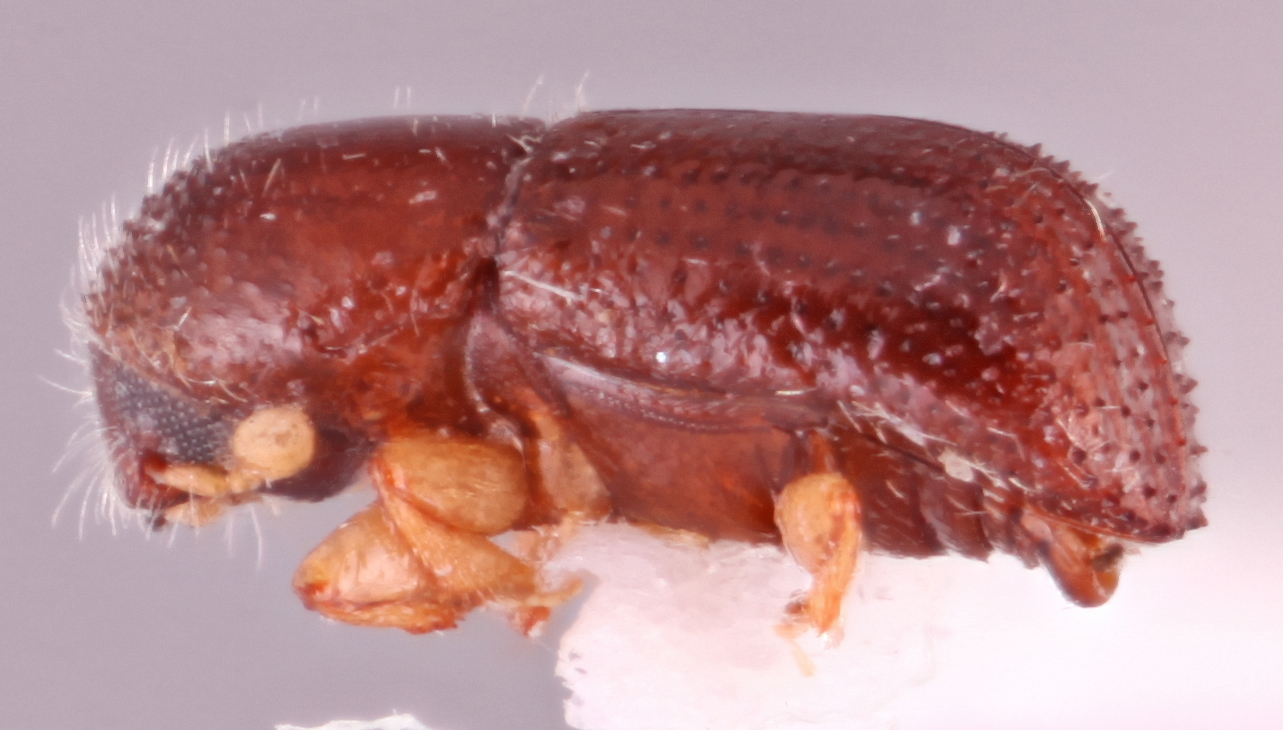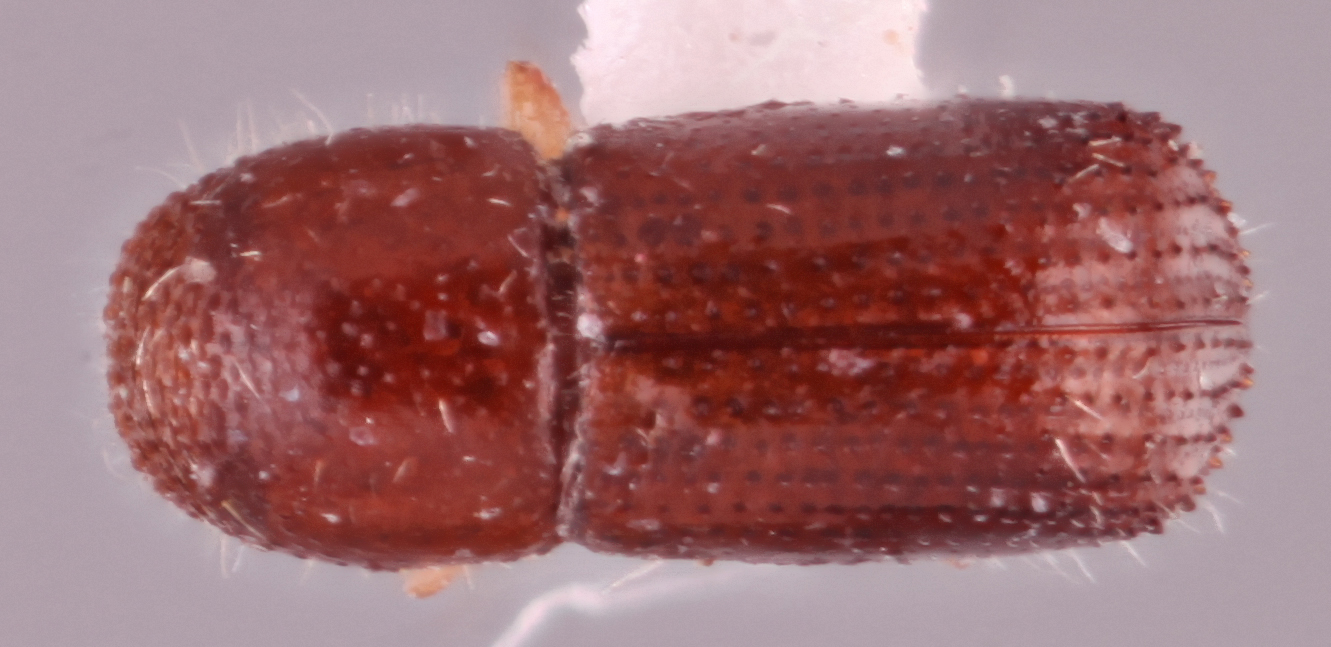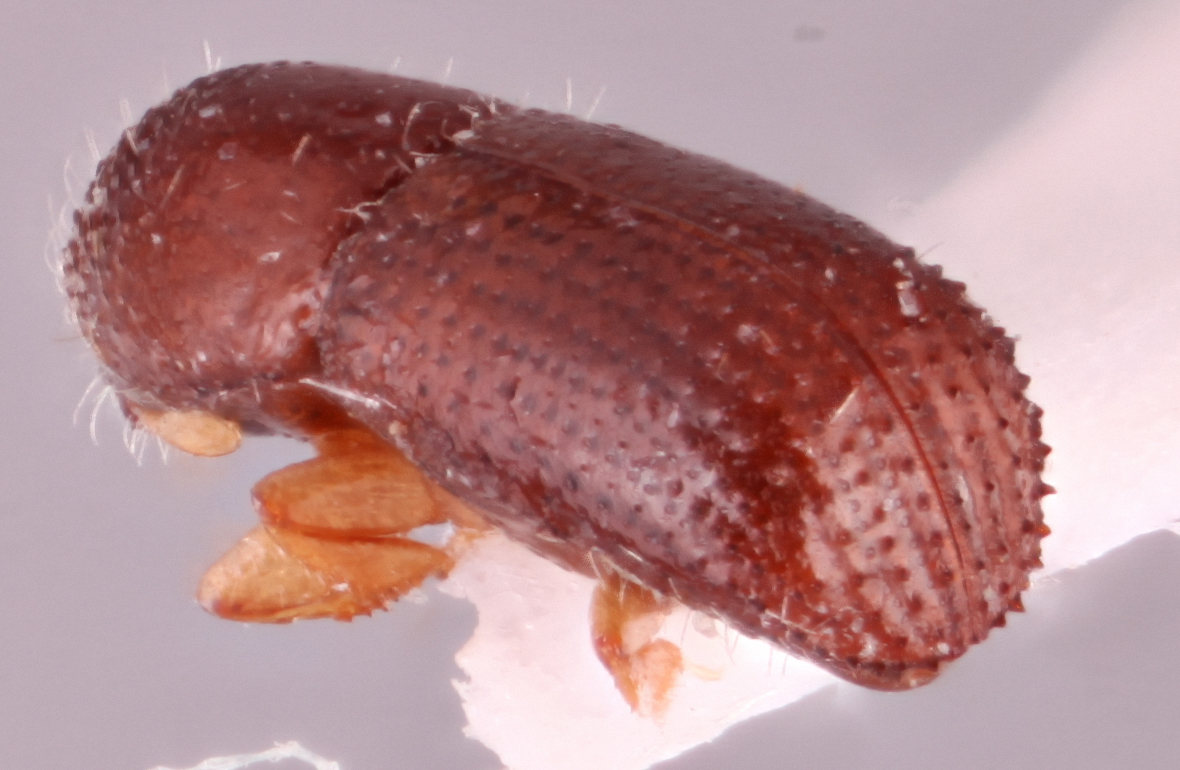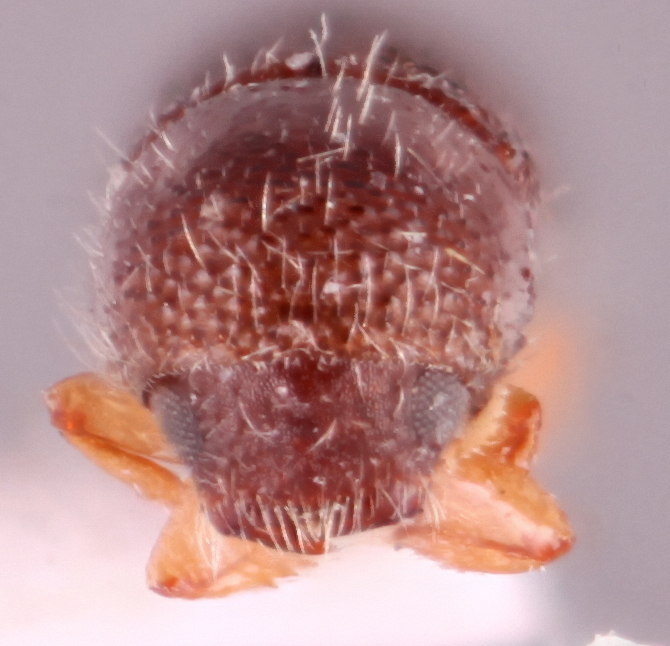Microperus nudibrevis
|
Microperus nudibrevis lateral; S.M. Smith |
|
Microperus nudibrevis dorsal; S.M. Smith |
|
Microperus nudibrevis declivity; S.M. Smith |
|
Microperus nudibrevis frontal; S.M. Smith |
Taxonomic history
Xyleborus nudibrevis Schedl, 1942a: 195.
Coptodryas nudibrevis (Schedl): Wood and Bright, 1992: 825.
Microperus nudibrevis (Schedl): Beaver et al., 2014: 55.
Diagnosis
1.5−1.6 mm long (mean = 1.53 mm; n = 5); 2.5−2.91 times as long as wide. This species is distinguished by the elytralelytral:
pertaining to the elytra
discdisc:
the flat central upper surface of any body part (e.g. pronotum and elytra) flat with short, steep obliquely truncateobliquely truncate:
flat with short, steep obliquely truncateobliquely truncate:
nearly truncate but rounded not flat in lateral view
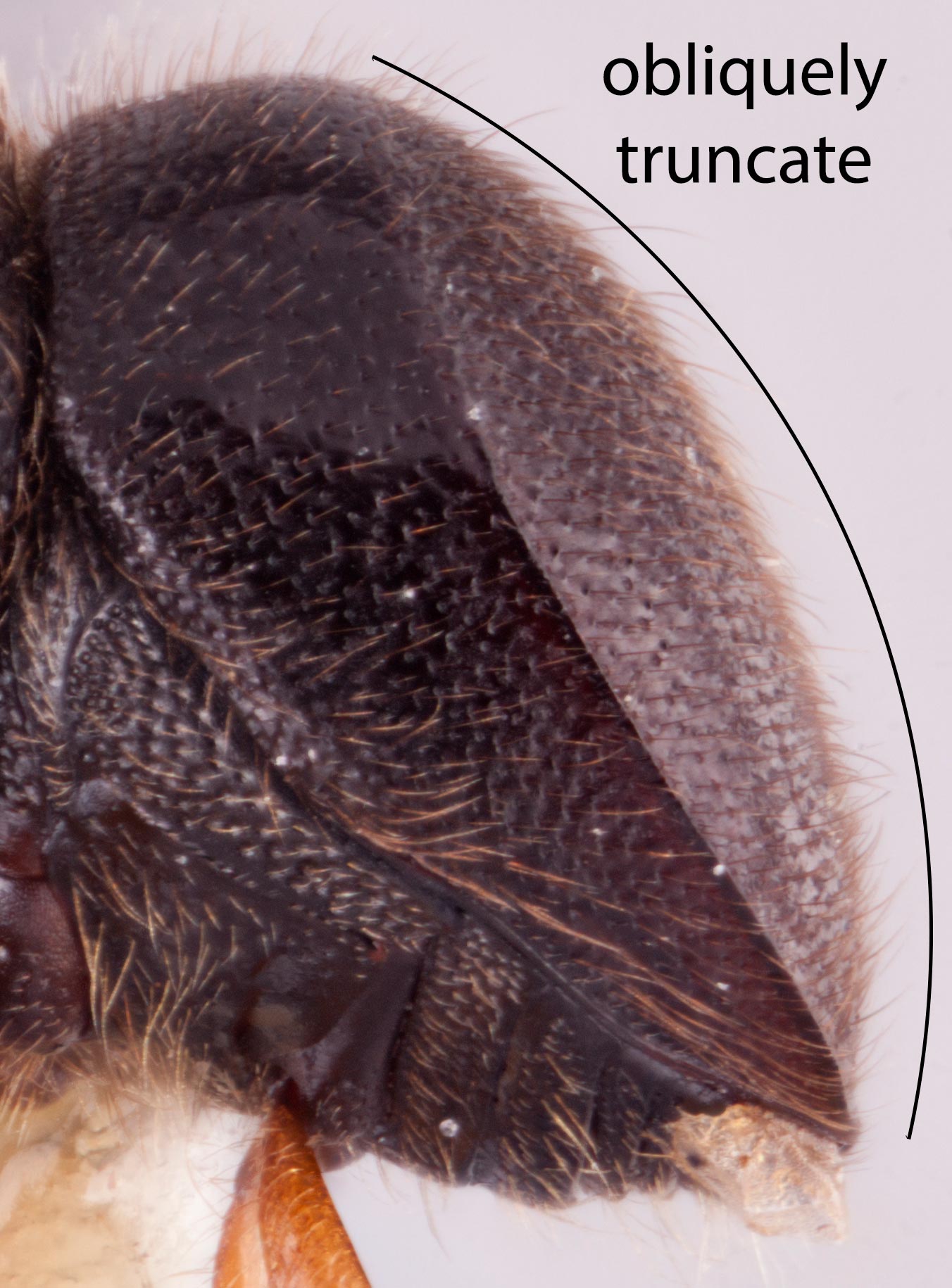 elytralelytral:
elytralelytral:
pertaining to the elytra
declivitydeclivity:
downward slope of either the pronotum or elytra
 ; posterolateralposterolateral:
; posterolateralposterolateral:
relating to end of the side part/portion
 carinacarina:
carinacarina:
an elevated ridge or keel, not necessarily high or acute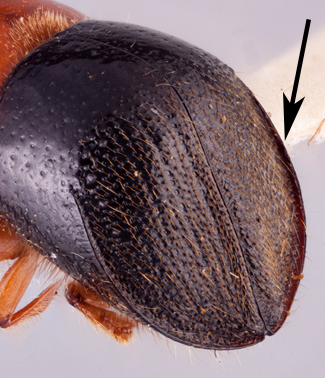 strong and denticulatedenticulate:
strong and denticulatedenticulate:
covered in denticles
; declivitaldeclivital:
pertaining to the elytral declivity
interstriae straight from basebase:
point or edge closest to the body; opposite of apex to apexapex:
to apexapex:
point or edge furthest from the body; opposite of base
 , never laterally broadened; declivitaldeclivital:
, never laterally broadened; declivitaldeclivital:
pertaining to the elytral declivity
interstriae densely granulategranulate:
pertaining to a coarse, grainy surface texture
 , granulesgranule:
, granulesgranule:
a small rounded protuberance, like grains of sand
 uniformly sized and spaced from declivitaldeclivital:
uniformly sized and spaced from declivitaldeclivital:
pertaining to the elytral declivity
summit to elytralelytral:
pertaining to the elytra
apexapex:
point or edge furthest from the body; opposite of base
 ; declivitaldeclivital:
; declivitaldeclivital:
pertaining to the elytral declivity
face opalescentopalescent:
iridescent, showing vaying colors
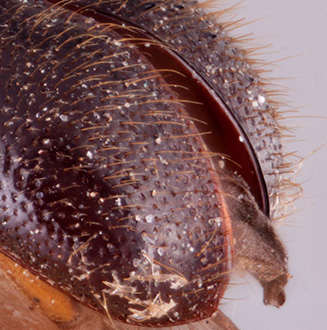 , subshining.
, subshining.
May be confused with
Microperus kirishimanus, M. latesalebrinus, M. molestus, and M. perparvus
Distribution
China (Hong Kong), East & West Malaysia, Japan, Thailand, Vietnam
Host plants
recorded from five genera in five different families of trees, and presumably polyphagous (Beaver et al. 2014Beaver et al. 2014:
Beaver RA, Sittichaya W, Liu L-Y. 2014. A synopsis of the scolytine ambrosia beetles of Thailand (Coleoptera: Curculionidae: Scolytinae). Zootaxa 3875: 1-82. http://dx.doi.org/10.11646/zootaxa.3875.1.1)
Remarks
Browne (1961a) suggests that the female lays eggs in clusters over a considerable period, the offspring from each cluster occupying a separate brood chamber.
DNA data
Sequences available for COI and CAD.

